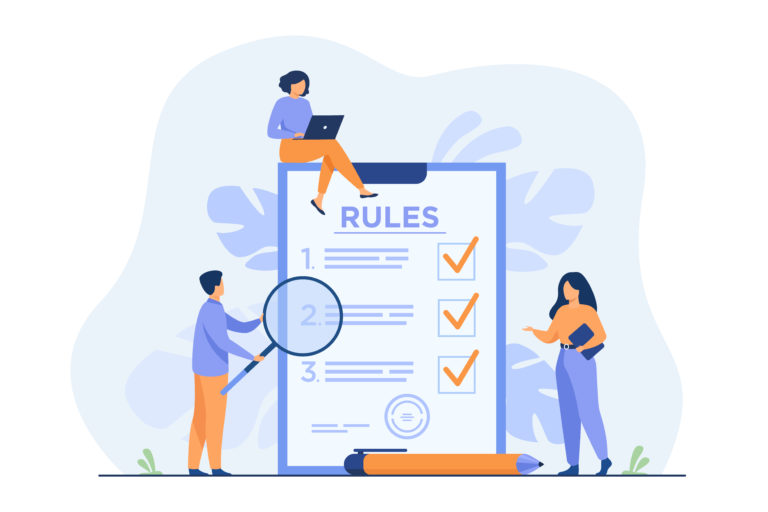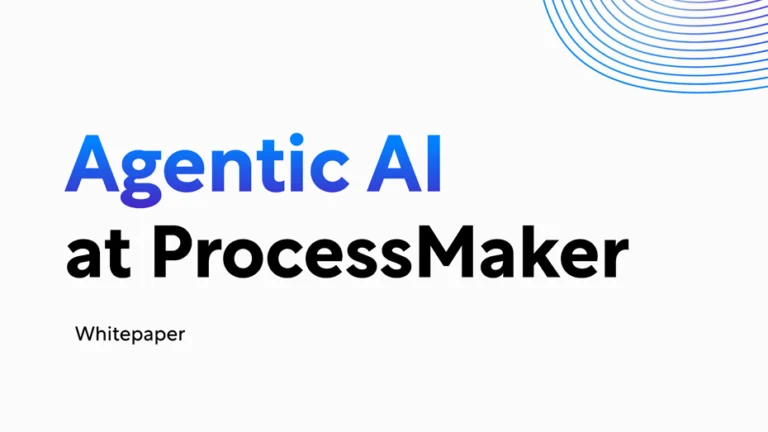Business rules are the playbook that dictates how your organization operates. They codify business practices and procedures with an If This, Then That mindset, instructing employees and software how to make decisions. When these criteria are met, business rules say, do this next.
How business rules guide an organization’s decisions
For example, if you’re a college administrator and a student wants to drop a course, you might have a set of criteria to consider before granting the request:
- Does their major require this course?
- Will the student fall below the number of credits needed to maintain full-time status?
- Has the deadline passed to drop a class?
These three questions ultimately direct your final decision. You might implement them as a business rule so your fellow administrators adhere to the same thought process. You can also easily codify your logic so automated software can follow a similar decision tree.
This formal playbook dictates the payout of sales incentives, the potential of a college application, or if a shopping cart total earns free shipping. You can put rules in place to guide decisions like:
- If a sales team member has reached $375,000 in sales that month, cut a bonus check.
- If an SAT score is below a certain minimum, move a student to the “no” pile.
- When a customer orders more than $200, ship their items for free.
When applied to automated workflows, business rules reduce the amount of manual interference needed to come to a decision. Common scenarios are made as “black and white” as possible to leave the heavy-lifting of more nuanced decisions for human staffers.
How banks can use business rules when modeling loan application workflows
Rules can be as simple as “respond to customer service inquiries within two hours of receipt” or more corporate culture-based like, “on Fridays, employees can dress casually.” They can also govern more elaborate processes that consider multiple parameters, like when to decline a loan application or award a customer with Platinum status.
Banks are very familiar with rules engines. They use them to determine eligibility for loans, credit cards, and new bank account openings. Consider the workflow behind a new loan application.
When an application workflow lands on the “Loan Prequalification” task, the customer’s information is fed through a rules engine. This could include identity verifications, credit score assessments, or checks against anti-terrorism blacklists. Your rules engine pits the results of each check against your preset qualifiers to determine the customer’s eligibility.
If all runs smoothly, the process moves onto the “Qualified” step, sending an email to the customer to celebrate their loan qualification. Suppose a database has red-flagged the application or the applicant’s credit score is below your preferred threshold. In that case, the workflow knows to follow the “Unqualified” path and notify the customer that the bank has declined their application.
How business rules can influence customer service decisions
Luxury hotel chain The Ritz-Carlton is well known in the business world for giving employees a $2,000-per-guest discretionary fund to ensure an unforgettable stay. Many tech organizations use this as a hallmark of employee empowerment, but it’s also an example of a business rule that pervades the fabric of their organization.
When a dissatisfied customer approaches the front desk, staffers are free to upgrade them to a fancier room or book a complimentary city-view dinner for the evening. A well-oiled rules engine keeps a running tab, knowing whether or not to approve these additional bookings.
Create agile business rules using connectors like OpenRules
Process modelers can apply a single business rule to a range of workflows. If you change a rule’s scope, do you have to update the related process tasks one-by-grueling-one?
With a digital process automation platform like ProcessMaker, you can alter your rules in a snap. Similar to distributing a company memo revoking Casual Fridays, connectors like OpenRules can update all of your automated processes in one fell swoop. Rules aren’t hard-coded into every step but exist in a separate layer, called upon to govern a decision-making process when needed.
For example, say The Ritz-Carlton decides to increase their discretionary guest stipend from $2,000 to $2,500. Process modelers can edit the linked Excel database with the new maximum, and it will automatically populate every process that engages that rule.
To implement the best automated workflows, you need to start by formalizing your business rules. By standardizing your decision-making processes, they become teachable to software models. This permits automated tools to solve problems without taking precious time away from employees focused on higher-value projects.


